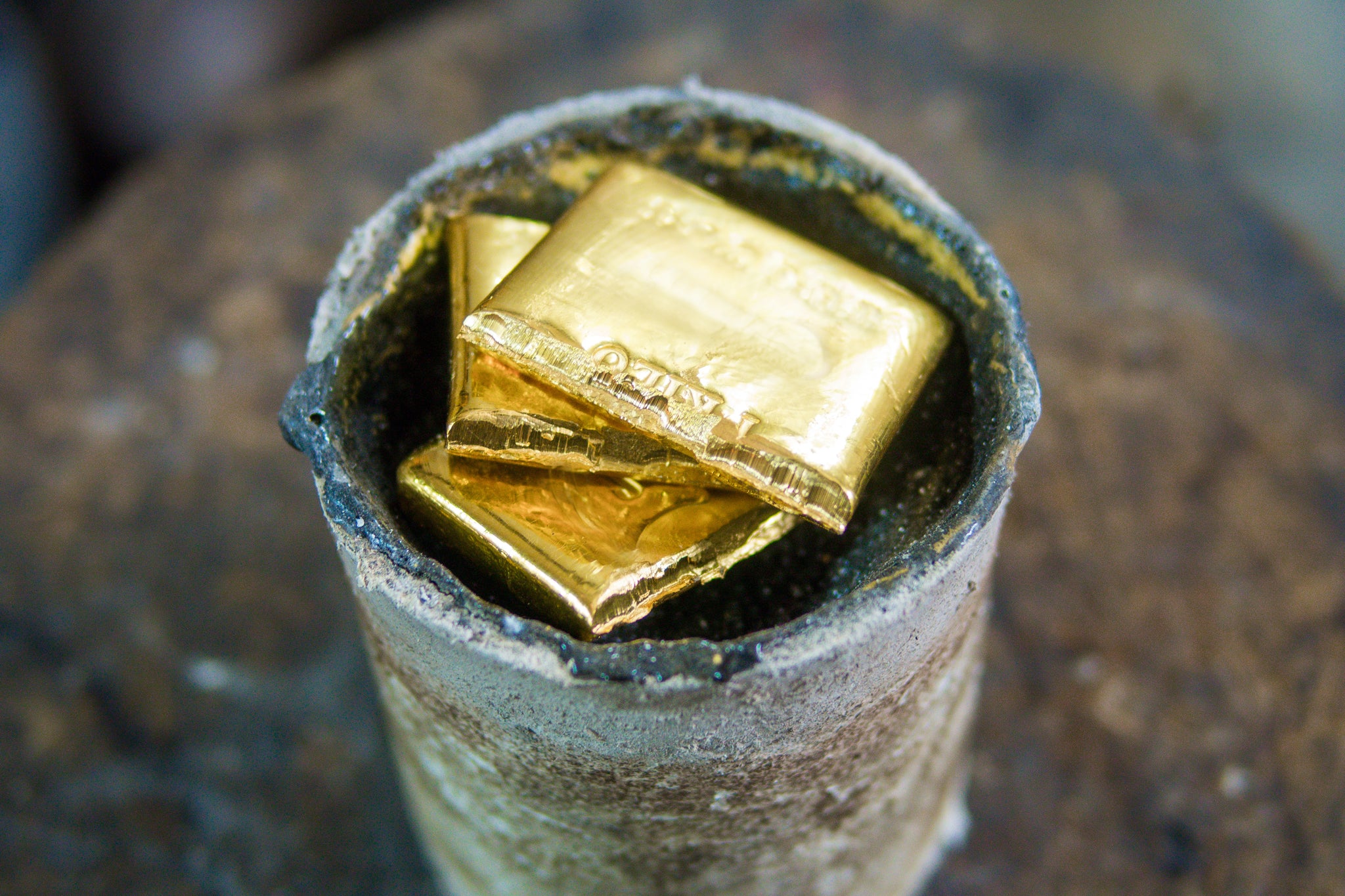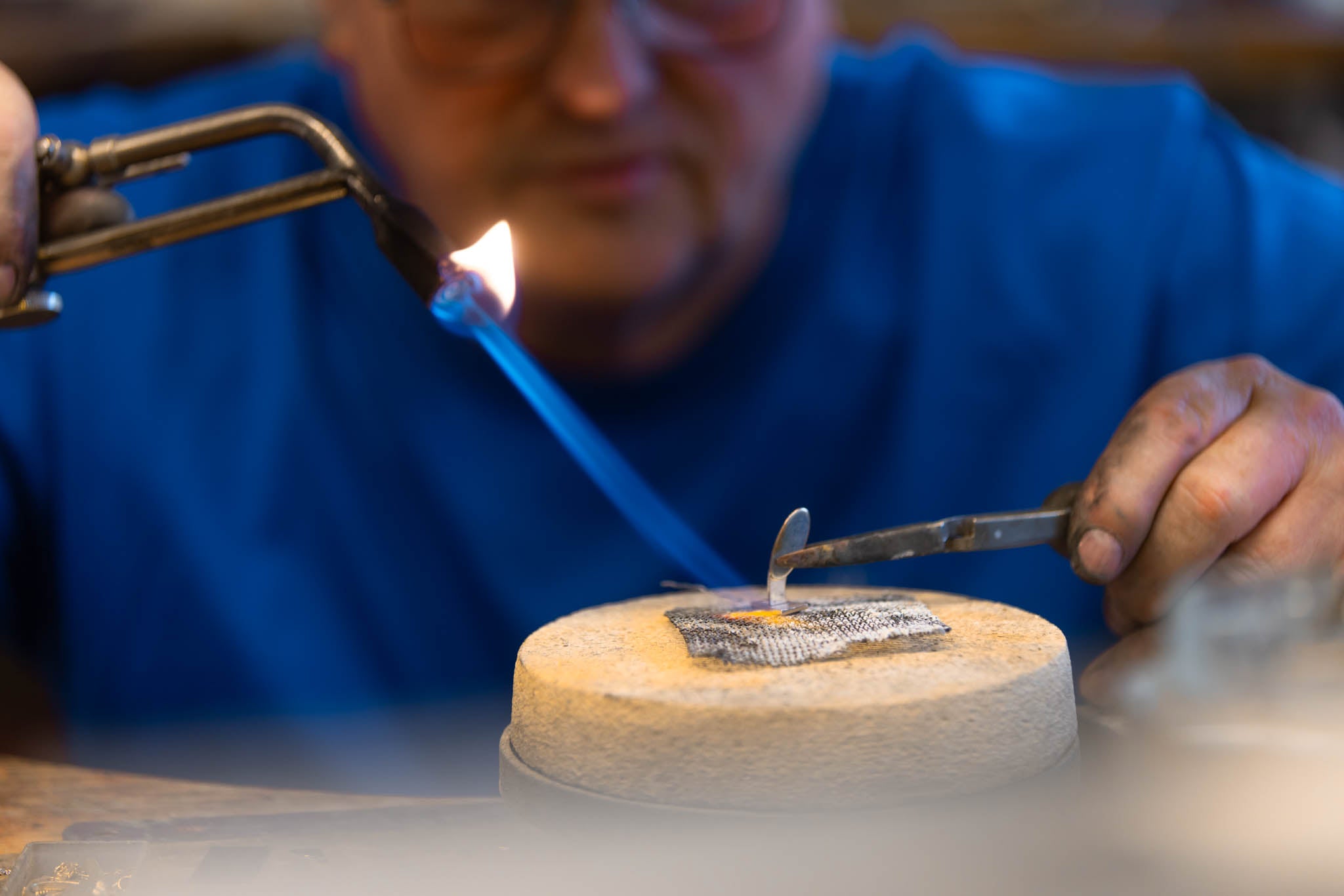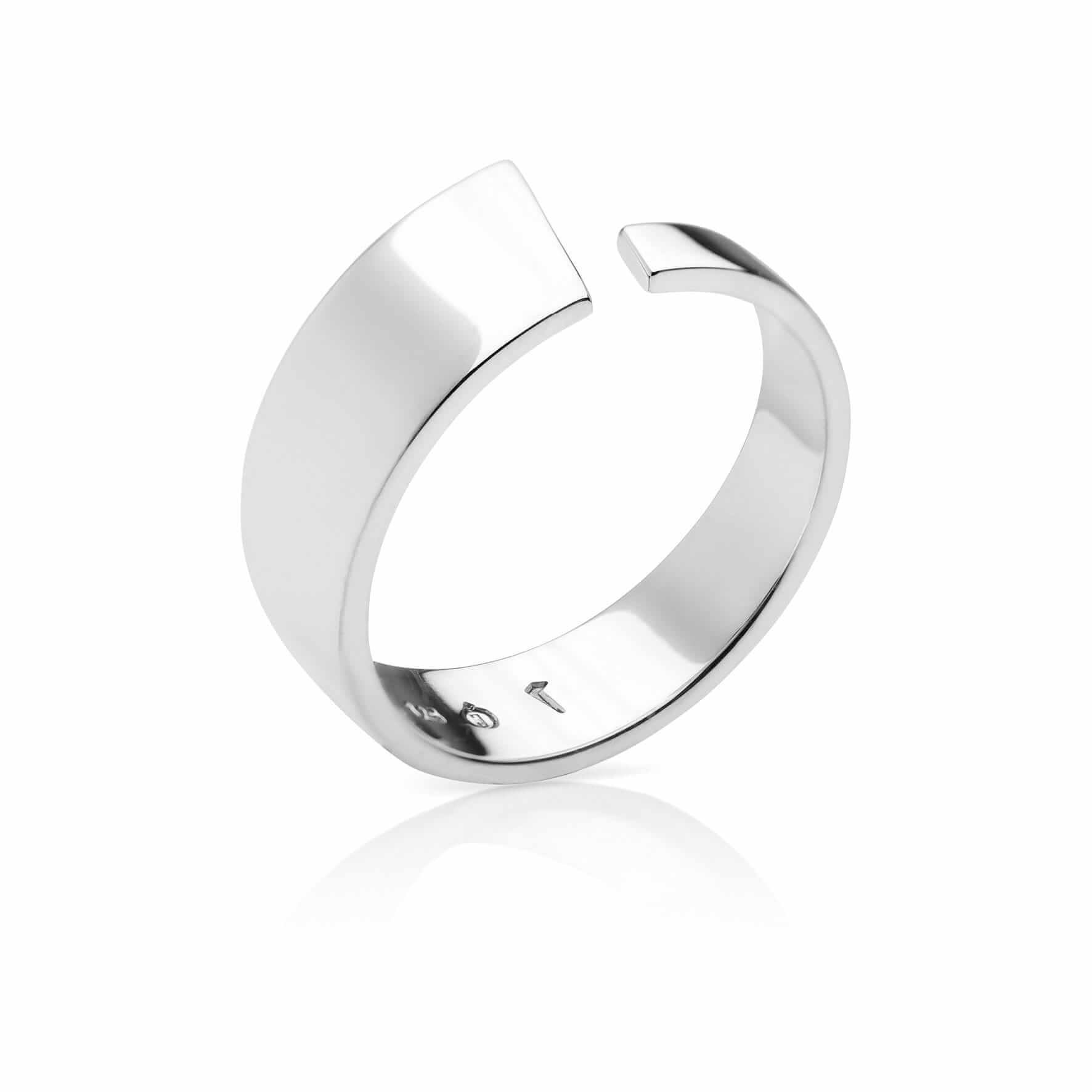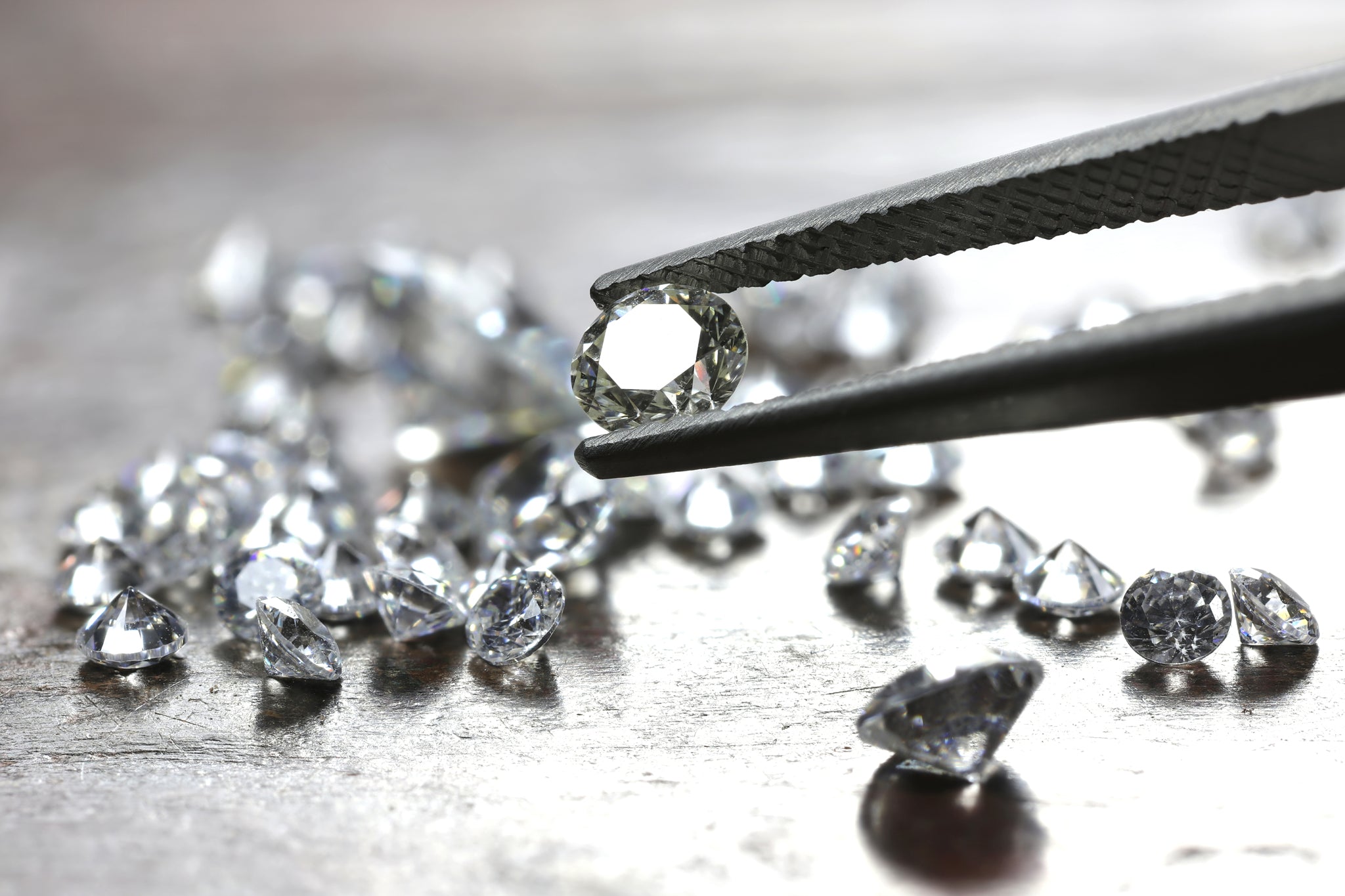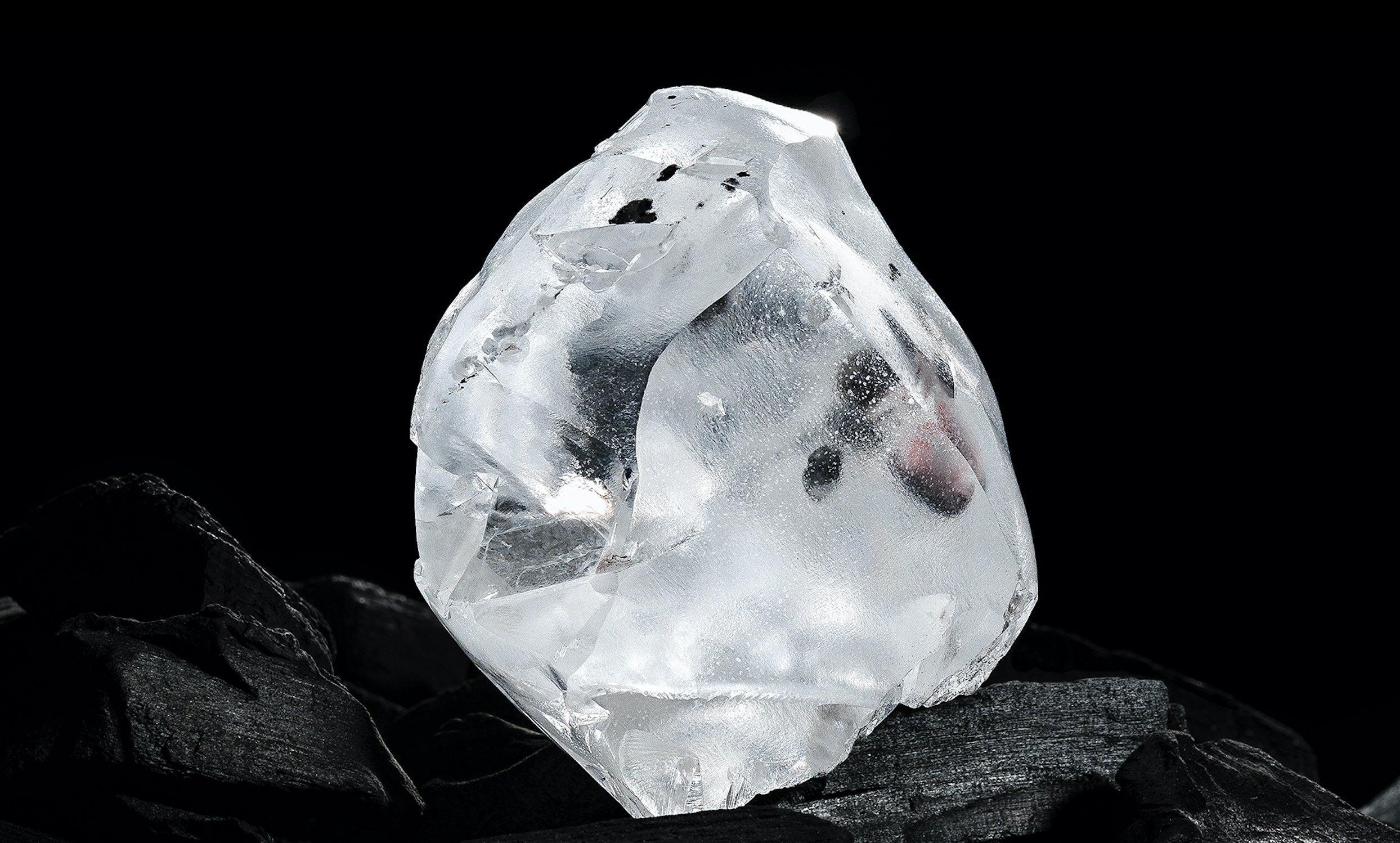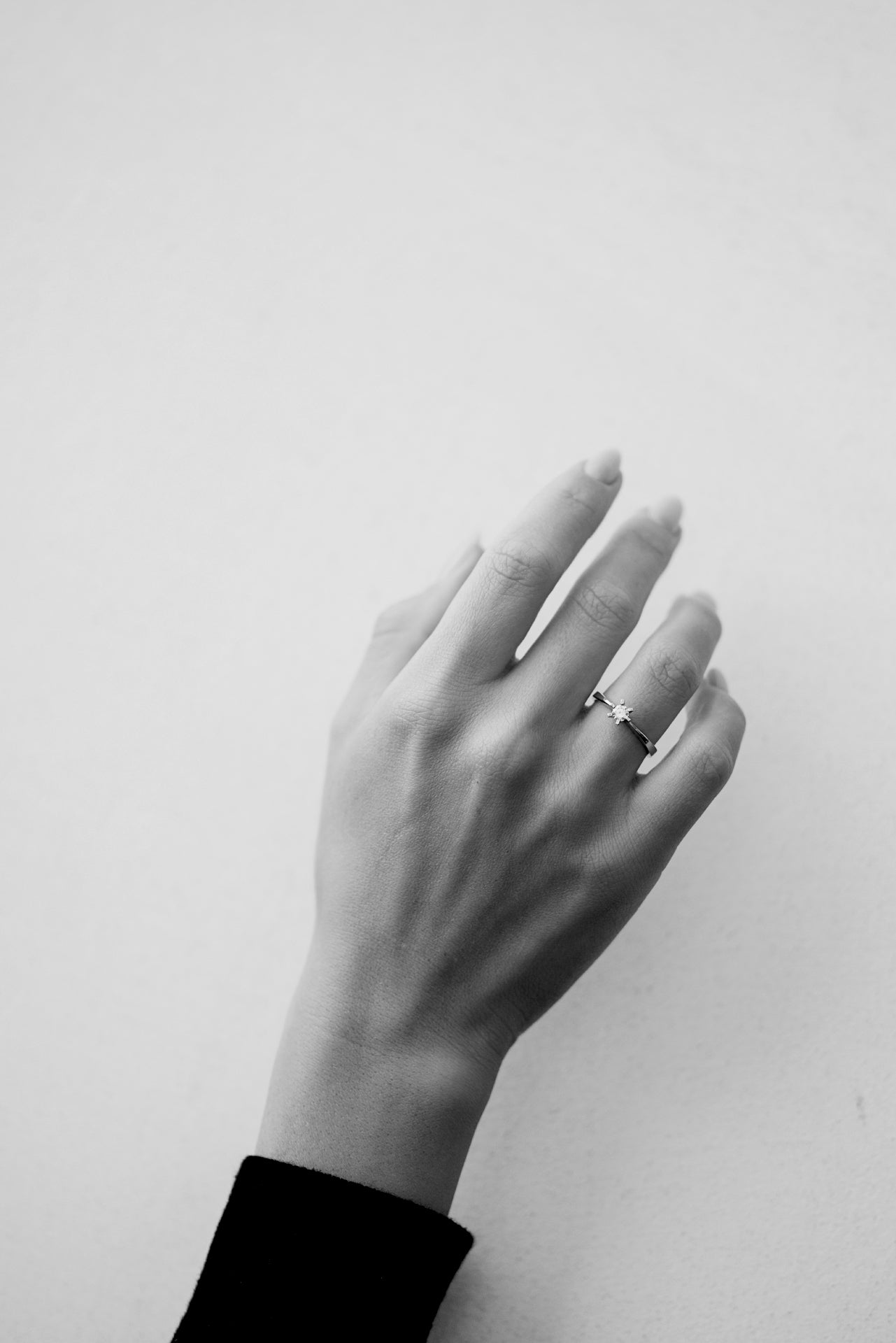Gold & karat
The karat of gold is a unit of measurement used to denote the purity of gold. It's commonly used to indicate the amount of pure gold in a gold alloy.
24 Karat Gold (24k):
This is pure gold, meaning it is composed of 100% gold without any other metals mixed in. However, pure gold is relatively soft and not very practical for jewelry or functional uses because it's susceptible to bending and scratching.
18 Karat Gold (18k):
18k gold contains 18 parts of gold and 6 parts of other metals, usually copper, silver, or zinc. This results in a gold content of 75% (18/24) and additional metals that increase the alloy's durability and strength.
14 Karat Gold (14k): Standard in Norway
14k gold contains 14 parts of gold and 10 parts of other metals. The gold content in 14k gold is 58.3% (14/24).
10 Karat Gold (10k):
10k gold contains 10 parts of gold and 14 parts of other metals. The gold content in 10k gold is 41.7% (10/24).

White vs yellow gold?
Yellow Gold:
Yellow gold jewellery is typically made by mixing pure gold with copper and silver in various proportions. Yellow gold requires less maintenance than white gold. It doesn't show scratches or wear as visibly due to its natural color.
White Gold:
To create white gold, pure gold is mixed with one or more white metals, such as nickel, palladium, or silver. The specific alloying elements used can vary, affecting the alloy's properties and final color. White gold may require periodic rhodium plating to maintain its bright white appearance. Over time, the rhodium plating can wear off, exposing the slightly yellowish underlying alloy.
Silver and Rhodium
We use sterling silver in our jewellery. Sterling silver is composed of 92.5% pure silver and 7.5% of other metals, typically copper. The addition of copper or other metals provides strength and durability to the alloy.
Our silver jewellery is marked with a "925" stamp, which indicates that the piece is made of 92.5% silver. This marking helps you to identify the genuine sterling silver.
Our silver and white gold jewellery is treated with rhodium, which is one of the most valuable metals in the world, often surpassing the price of gold and platinum. Rhodium plating gives our jewellery a bright, reflective surface and enhances its durability. Rhodium-plated jewellery is resistant to scratches and tarnish, and it maintains its brilliant white appearance over time.

